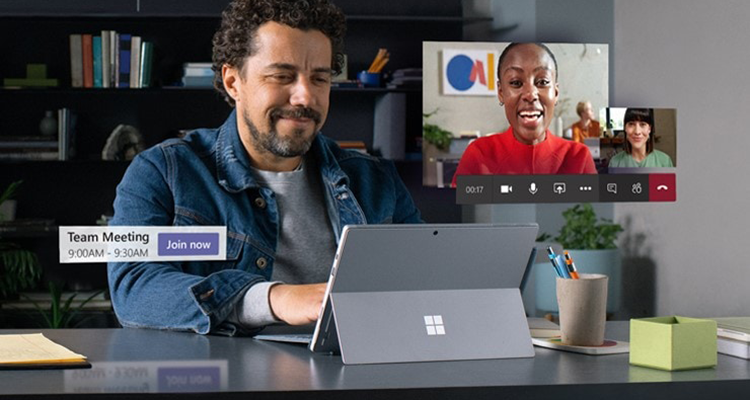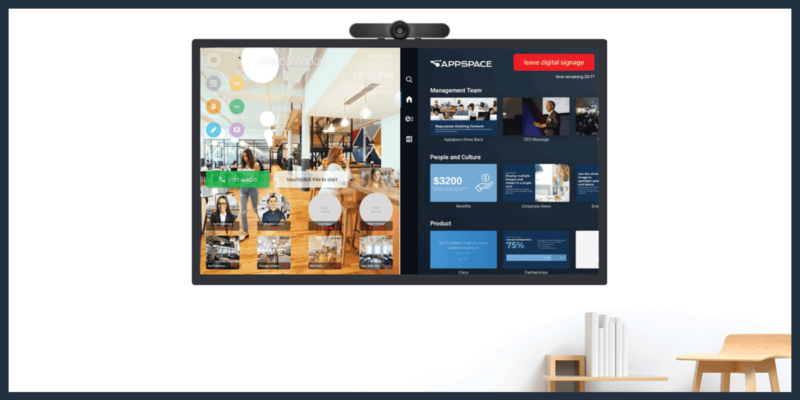COVID-19 and the New Era of Online Video Conferencing

Microsoft Teams
By Adam Cox
Futuresource Consulting
Populations are adjusting to COVID-19, with social distancing orders having compelled people to find alternatives to face-to-face meetings. As a result, cloud video conferencing solutions have never been more popular. With hundreds of millions of people now working from home, vendors such as Cisco, Lifesize and Microsoft have responded to the crisis by offering their cloud video conferencing solutions for free, or by extending the functionality of their existing free versions.
A New Cultural Shift Towards Video Communications
Until now, significant industry growth has seen companies adopt video conferencing technology, but without this developing into high levels of actual usage. A cultural shift was needed in order for people to fully embrace the benefits. Now, COVID-19 is ushering in that cultural shift. Companies that already used a videoconferencing solution have extended coverage throughout their organizations, while thousands of companies are now using video conferencing for the first time.
Microsoft and Zoom Leading the Way
All cloud conferencing providers have seen an uptick in customers, though Microsoft and Zoom have captured the majority of the growth. For many, the easiest option has been Microsoft Teams, as it is already included in Office 365 and can easily be integrated into workflows for company communications. Zoom, in addition to its use in the workplace, has proved popular for video calling between friends and family members. The company is believed to have added more users in the first two months of 2020 and the increase for March maybe even larger. Despite some complaints over the robustness of these platforms and concerns over the security of Zoom, Futuresource expects that many of these new users will remain on these platforms once COVID-19 restrictions are lifted. One thing is clear – the new acceptance of online video conferencing solutions will provide vendors with a raft of new opportunities over the short, medium and long term.
Opportunities for Personal Peripherals
In the hardware market, there has been very little impact on meeting room equipment, though this has been bolstered by a wave of demand for personal peripherals such as office hearables, speakerphones and webcams. That’s a trend that Futuresource expects to continue throughout Q2 2020, as homeworkers attempt to improve the quality of video calls with colleagues and customers. The return to pre-pandemic work patterns is likely to be gradual rather than sudden, with Futuresource anticipating increased demand for video-enabled meeting rooms in Q2, as workforces remain distributed between business premises and homes.
Launch Delays, but Accelerating Trends
With economic and social uncertainty high, companies and households alike are expected to reduce discretionary expenditure. The biggest increases in demand for hardware will occur at the lower end of the market, with cloud conferencing services experiencing the most growth, followed by personal peripherals and then software agnostic peripherals (SWAPs). As the workforce returns in the latter half of 2020, Futuresource expects to see strong growth in the lower end of the conferencing market, as businesses rush to increase the proportion of video-enabled rooms. The burgeoning room kit market will also benefit from this growing demand, as to a lesser extent so will more premium room solutions.
While the long-term ramifications of COVID-19 remain unclear, Futuresource expects that it will aid the acceleration of video conferencing trends already present in the market. Companies have been forced to quickly learn how to function with a widely distributed workforce. While many will return to their old models, a significant number will allow increased and widespread homeworking. For some, the pattern of work will change, with offices becoming the location for meetings and collaboration. They will be the places where decisions are made, rather than where all the work is done. Offices will be smaller, but will need more meeting rooms, and these meeting rooms will need to be video-enabled.
Many in the market have commented on the ‘first-click’ challenge. The biggest barrier to the growth of video conferencing is employee reluctance to take that first step and make that first click. Now COVID-19 has forced the hand of millions and home-working has allowed them to become accustomed to being on camera. The cultural shift has begun.




